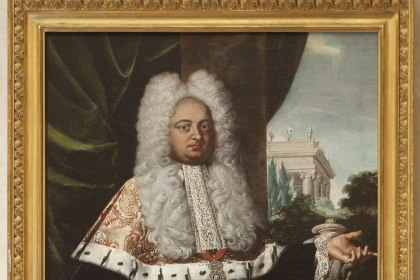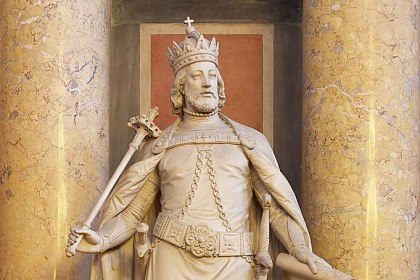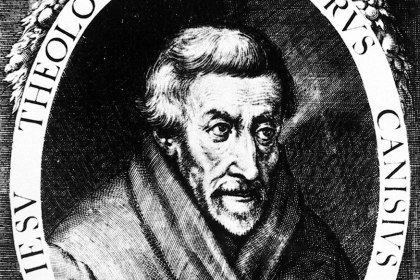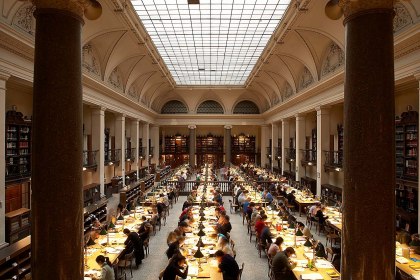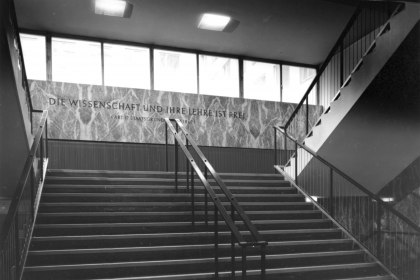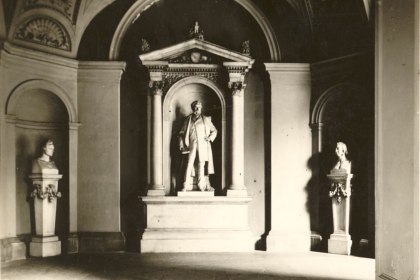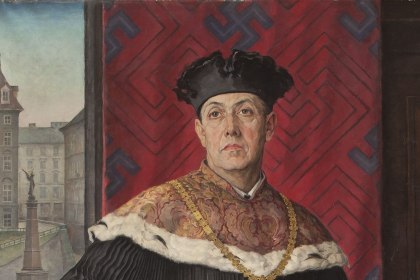Organizational structures in historical transition
An organizational framework was already formed in the University of Vienna’s deed of foundation in 1365. Its basic provisions, following the example of the University of Paris, remained valid for centuries with only few modifications. Only in the course of the reforms of the 19th and 20th century was this “university constitution” de facto invalidated. Nevertheless, the medieval terminology (faculty, rector, dean) is still used at the University of Vienna today, as it is at many other universities.
The deed of foundation defined the university’s organizational structure. For example, it was divided into four faculties led by deans (although the Faculty of Theology was only instituted in 1384) and all university members (including the students) were divided into four “academic nations” whose heads, the procurators, elected the university rector. Furthermore, the duties of the university chancellor – who was also the dean of St. Stephen’s cathedral – were defined. Jurisdiction over all university members (“supposita”) was given to the rector. Emperor Joseph II eliminated this academic jurisdiction in 1783, but many years later the former regulations still informed the conception that the police could not set foot on “academic ground”.
When Duke Albert III – who had sealed the deed of foundation together with his older brother Rudolf IV – confirmed the university’s foundation in 1384, many regulations were upheld, but some innovations were made as well. The division of the four academic nations was changed in a way that endured until the early 19th century. While it had been decreed in 1365 that the rector had to be appointed from the magisters of the Faculty of Arts, now members of all faculties were to be elected alternately. With the constitution of the “collegium ducale” (Duke’s College), the Duke established a financial and infrastructural basis which secured the university’s continued existence and encouraged the papal decree to allow the foundation of a theological faculty.
Within this organizational framework, the university reserved the right to define its own statutes. The emerging state in the early modern age decided to grant itself more influence on the university and its studies. This was for example achieved through the enhancement of the role of the royal superintendent, who was supposed to ensure that no decisions were made in the university consistory against the local regent’s will. The structures shaped by the university founders following the example of the University of Paris remained untouched for the most part, however. Even the 18th century reformers preferred not to change much in this regard. Instead, they appointed state study directors alongside the existing faculty system, who supervised and controlled the studies. Restrictions to the duties of the faculty-elected deans were implemented, but these positions still were not eliminated altogether.
Beginning in 1849, university reforms de facto invalidated the “university constitution” (there was no formal repeal, however). The academic nations were removed from the university community, which led to the need for a new modus operandi in regard to the election of the rector. The faculties no longer consisted of all graduated members, but instead of the professors (“Ordinarienuniversität”, “university of tenured professors”). Scientific disciplines were institutionalized with the establishment of seminars and institutes. In 1922 the number of faculties rose to five, when the Faculty of Protestant Theology – which had formerly existed outside of the university – was incorporated.
At the end of the 20th century the university departed from the medieval division into certain faculties and the Universitätsgesetz (university law) of 2002 gave the university the right to establish faculties and centers largely after its own ideas.
-
The university’s leadership from the 14th to the 19th century
1365–19th Cent. -
University foundations
1384–1784 -
University reforms under Ferdinand I.
1521–1554 -
The Society of Jesus and the University of Vienna
1551–1773 -
The University Library
1365–2015 -
Freedom of Teaching and Learning
-
Universitas semper reformanda
1873–2004


